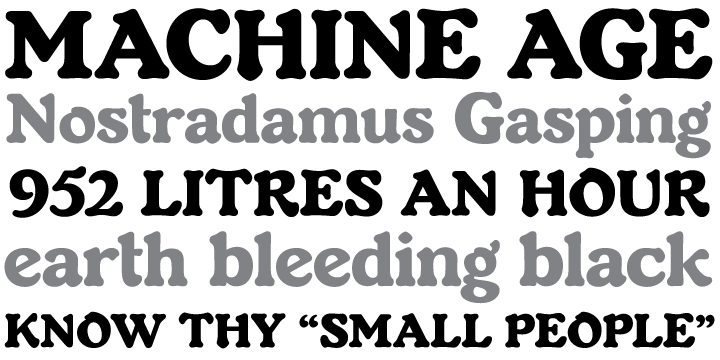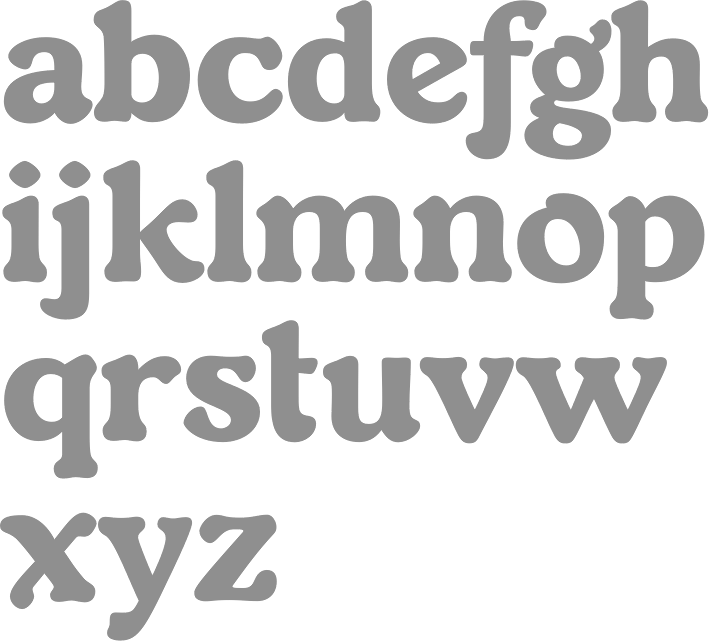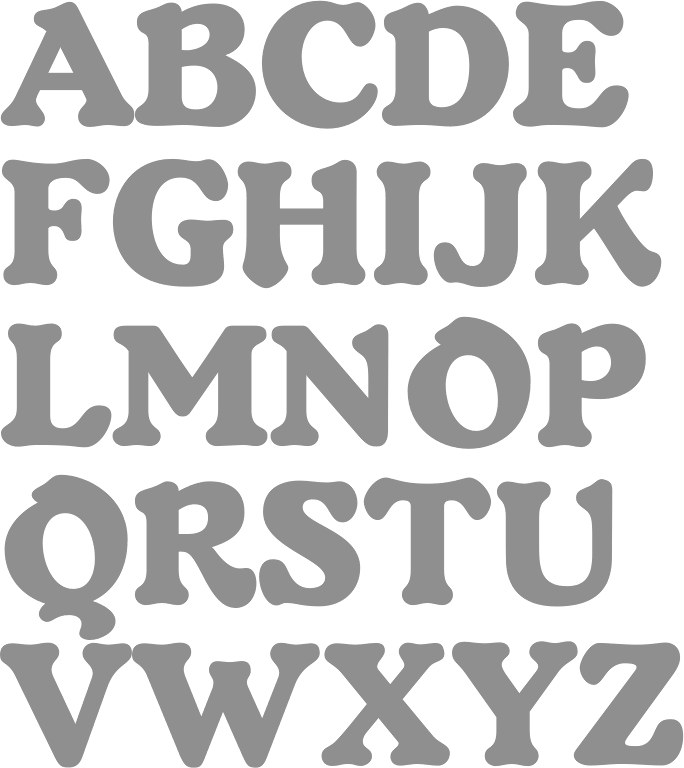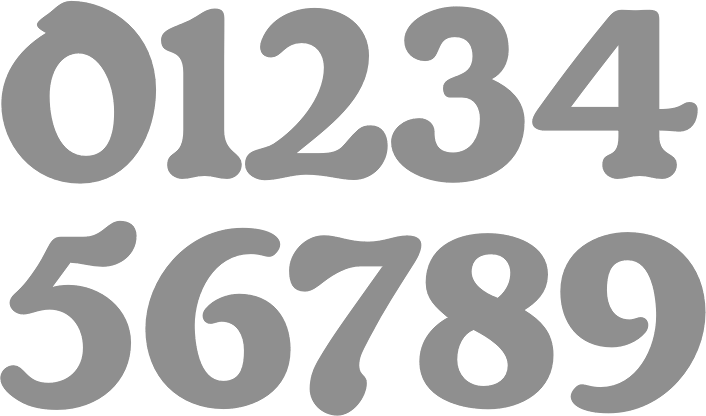TYPE DESIGN INFORMATION PAGE last updated on Wed Dec 17 04:16:52 EST 2025
FONT RECOGNITION VIA FONT MOOSE
|
|
|
|
Cooper Black versus Robur
[Patrick Griffin]
An excellent piece written by Patrick Griffin in 2010 when he and Kevin King published Robur at Canada Type, in which they explain the chronology of the machine age ad typefaces starting with Peignot. Reproduced here without Patrick's permission. It shouldn't be a surprise to anyone that these letter shapes are familiar. They have the unmistakable color and weight of Cooper Black, Oswald Cooper's most famous typeface from 1921. What should be a surprise is that these letters are actually from Georges Auriol's Robur Noir (or Robur Black), published in France circa 1909 by the Peignot foundry as a bolder, solid counterpart to its popular Auriol typeface (1901). This typeface precedes Cooper Black by a dozen of years and a whole Great War. Cooper Black has always been a bit of a strange typographical apparition to anyone who tried to explain its original purpose, instant popularity in the 1920s, and major revival in the late 1960s. BB&S and Oswald Cooper PR aside, it is quite evident that the majority of Cooper Black's forms did not evolve from Cooper Old Style, as its originators claimed. And the claim that it collected various Art Nouveau elements is of course too ambiguous to be questioned. But when compared with Robur Noir, the "elements" in question can hardly be debated. The chronology of this "machine age" ad typeface in metal is amusing and stands as somewhat of a general index of post-Great War global industrial competition:
So almost a hundred years after its initial fizz, Robur is here in digital form, to reclaim its rightful position as the inspiration for, and the best alternative to, Cooper Black. Given that its forms date back to the turn of the century, a time when foundry output had a closer relationship to calligraphic and humanist craft, its shapes are truer to brush strokes and much more idiosyncratic than Cooper Black in their totality's construct. |
EXTERNAL LINKS |
| | |

file name: Patrick Griffin Kevin King Robur 2010

file name: Patrick Griffin Kevin King Robur 2010b

file name: Patrick Griffin Kevin King Robur 2010c

file name: Patrick Griffin Kevin King Robur 2010d
| | |
|
Luc Devroye ⦿ School of Computer Science ⦿ McGill University Montreal, Canada H3A 2K6 ⦿ lucdevroye@gmail.com ⦿ https://luc.devroye.org ⦿ https://luc.devroye.org/fonts.html |

